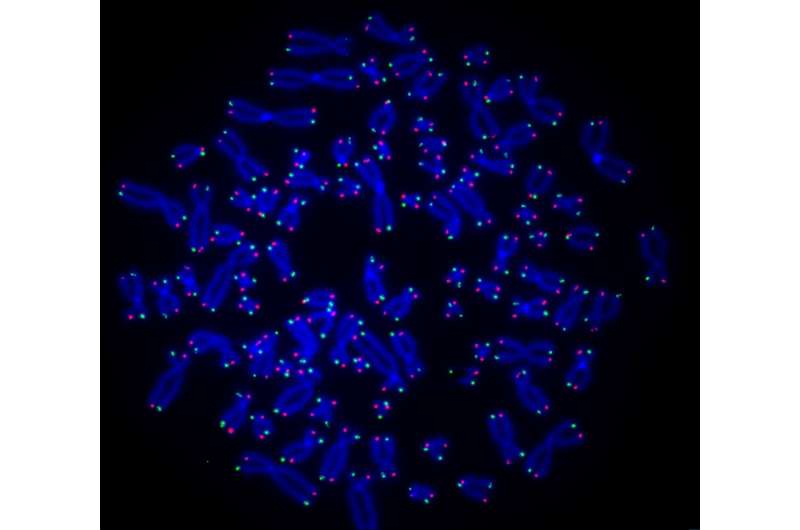
In a groundbreaking study published on July 3, 2025, in Molecular Cell, researchers from the University of Pittsburgh and Emory University have introduced a novel molecular tool that could revolutionize cancer treatment. The tool, known as BLOCK-ID, sheds light on how certain cancer cells repair their telomeres, offering new avenues for therapeutic intervention.
Telomeres, the protective caps at the ends of chromosomes, shorten each time a cell divides. While most cells use the enzyme telomerase to combat this loss, about 10% to 15% of cancers employ an alternative mechanism known as the alternative lengthening of telomeres (ALT) pathway. According to Dr. Roderick O’Sullivan, a professor at the University of Pittsburgh, “ALT is found in some of the worst cancers, such as pancreatic neuroendocrine tumors, osteosarcomas, and subsets of glioma.”
Understanding the ALT Pathway
The ALT pathway has long been a mystery, often described as a “black box.” The introduction of BLOCK-ID by Dr. O’Sullivan and Dr. Kyle Miller, a professor at Emory University, marks a significant step forward in understanding this elusive process. BLOCK-ID acts as an artificial barrier, allowing scientists to observe collision events at specific cellular locations.
During cell division, DNA unwinds to form a replication fork, providing access for replication proteins. However, this process can stall, creating a protein barrier. “A replication fork is like a train coming along train tracks, but if the line ends suddenly due to a protein barrier, the train will collide,” explains Dr. O’Sullivan.
The Role of BLOCK-ID
BLOCK-ID uses an enzyme to tag proteins with biotin, marking them as having interacted with the protein barrier. This tagging allows researchers to trace these proteins and understand their role in the ALT pathway. Through this method, the team identified TRIM24 as a critical player in ALT cancer cells.
“If you remove TRIM24 from normal cells, they can tolerate it, but if you remove this protein from ALT cells, they don’t like it,” said Dr. O’Sullivan. “Without TRIM24, telomeres in ALT cells become a mess: they shorten, and they become destabilized and nonfunctional.”
Challenging Previous Assumptions
Prior to this study, the protein PML was thought to be essential for ALT due to its role in forming a shell around telomeres. However, the research team discovered that tethering TRIM24 to telomeres in the absence of PML still allowed for the formation of telomere repair shells. This finding highlights the redundancy and complexity of the ALT mechanism.
“This experiment tells us how important TRIM24 is to the ALT mechanism,” said Dr. O’Sullivan. “It also tells us that ALT has inbuilt redundancies. This is really important because if we are going to target ALT, we need to understand its complexities.”
Implications for Cancer Treatment
The discovery of BLOCK-ID and its ability to elucidate the ALT pathway opens new possibilities for cancer therapies targeting this specific mechanism. By understanding the role of proteins like TRIM24, researchers can develop strategies to disrupt the ALT pathway, potentially leading to innovative treatments for aggressive cancers.
As the study authors continue their research, the scientific community eagerly anticipates further insights into the ALT pathway and its implications for cancer treatment. The collaboration between the University of Pittsburgh and Emory University exemplifies the power of interdisciplinary research in advancing our understanding of complex biological processes.
For more information, the study titled “TRIM24 directs replicative stress responses to maintain ALT telomeres via chromatin signaling” can be accessed in Molecular Cell. DOI: 10.1016/j.molcel.2025.06.009.






